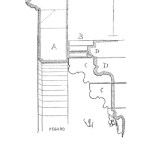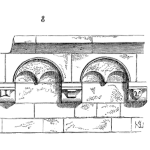
In recent articles we covered value stream concepts and characterized the value stream in the context of supply chain major sub-processes. We summarized the manufacturing value stream according to the following process blocks:
Your Reliability Engineering Professional Development Site
by Robert Allen Leave a Comment

In recent articles we covered value stream concepts and characterized the value stream in the context of supply chain major sub-processes. We summarized the manufacturing value stream according to the following process blocks:
by Carl S. Carlson Leave a Comment
A picture is worth a thousand words. An interface is worth a thousand pictures. Ben Shneiderman
In this article, I will outline how to evaluate an individual Design FMEA (DFMEA) against the FMEA Quality Objective for Interfaces. [Read more…]
by Laxman Pangeni Leave a Comment

When we think of reliability tools, the FMEA often takes the spotlight. But if you’re skipping the P-Diagram, you’re likely missing the very foundation of failure prevention.
In my 15+ years working on field reliability and failure analysis, I’ve come to view the Parameter Diagram (P-Diagram) as the unsung hero of robust design.
[Read more…]by Fred Schenkelberg Leave a Comment
Stories communicate well. We have been telling stories long before the invention of writing or the internet. The MTBF stories we tell communicate our ideas, suggestions, and recommendations.
There are differences between good and poor stories. How you tell a story matters as well as the subject of the story. Now, MTBF stories may not be the most thrilling or entertaining, yet there are stories on MTBF topics that matter.
Let’s explore using the power of story to cause those around us to better understand and avoid the use of MTBF. [Read more…]
by Semion Gengrinovich Leave a Comment

Accelerated Life Testing (ALT) is a method used in reliability engineering to assess the lifespan and performance of a product under accelerated stress conditions. The goal is to uncover potential faults and failures in a shorter time frame than would be possible under normal operating conditions. ALT is particularly useful when the product’s expected lifespan is long, and waiting for failures to occur naturally is not feasible.
In the context of Design Verification (DV), ALT can help shorten the testing time by inducing failures more quickly than under normal conditions. This allows engineers to identify and address potential issues earlier in the product development process, thereby improving the product’s reliability and reducing the time to market. [Read more…]
by Greg Hutchins Leave a Comment

Economics concerns itself with the determination of the most logical and effective use of resources to meet private and social goals for some form of benefit. While primarily concerned with industry and business, its concepts of opportunity cost, supply and demand, present value, and mutual interdependence economics is also applicable to email; one of our most utilised forms of communication but, possibly, the most hated. [Read more…]
by Mike Sondalini Leave a Comment

Ultimately reliability is in the hands of the people that use, build and rebuild equipment. High equipment reliability requires precision workmanship and steady, considerate operation (known as Degradation Management). Both equipment operator and equipment maintainer need to be precise, they need to know exactly what to do to always produce great reliability. Most procedures and check sheets are so poorly written that they cause equipment to be failed. Standard operating procedures can create reliability if they ensure that users meet minimum quality standards. World-class standard operating procedures set not only a minimum level of quality, but they also set a highest level of quality that when achieved deliver amazing equipment reliability.
[Read more…]by Ray Harkins Leave a Comment

Across industries and disciplines, one challenge remains constant: how to prioritize the right improvement projects to drive meaningful, measurable progress. Whether you work in continuous improvement, reliability, quality, or manufacturing engineering, you have more ideas and opportunities than time or resources to pursue them. This is where the Theory of Constraints (TOC) shines. Developed by Dr. Eliyahu Goldratt, TOC offers a focused methodology for identifying the best opportunities for improvement, allocating resources wisely, and sustaining continuous advancement.
by Nancy Regan Leave a Comment

If you’re managing equipment that’s 10, 20, or even 40 years old, it may be time to revisit some of the maintenance tasks you’ve put in place. In today’s video, I explain why it’s essential to periodically review your proactive maintenance tasks and other strategies as your equipment ages and how Reliability Centered Maintenance (RCM) principles can help.
[Read more…]by Hemant Urdhwareshe Leave a Comment

Dear friends, Institute of Quality and Reliability (IQR) is happy to release this first video in our series on statistical process control charts. In the video, Hemant Urdhwareshe, Director of IQR and Fellow of ASQ explains criteria for selection of control charts, and has illustrated how to plot X-bar and Range chart using Microsoft Excel with an application example. Hemant has also explained briefly the interpretation rules to detect special causes. The video is little long but request viewers to watch it till end for best viewing experience.
[Read more…]by Semion Gengrinovich Leave a Comment

The importance of failure repeatability lies in its role in understanding and improving systems, processes, and products. Failure repeatability refers to the consistency with which a system or device can reproduce an outcome under unchanged conditions. In the context of product design engineering and testing, being able to consistently replicate a failure means that the underlying cause can be more accurately identified and addressed.
[Read more…]by Fred Schenkelberg Leave a Comment

Let say you have some time to failure data on your equipment. A common action is to calculate the MTBF. All well and good until you expect to make a meaningful decision based on the calculation.
Using just the mean of the data, the MTBF value is likely to provide you with a less-than-useful bit of information. Thus, your decision will be rather random or worthless.
Let’s explore just how this simple calculation of perfectly good data can mislead your decision-making. [Read more…]
by James Reyes-Picknell Leave a Comment

Are you having trouble producing good quality maintenance job plans?
Is your “standard job” plan library nearly empty?
Is your planned work running below 65% (bottom quartile)?
Note: scheduling without a plan, isn’t planned, and failing to plan is planning to fail!
With maintenance costs burning up to 30% or more of your operating costs (depending on industry) there can be a big benefit from reducing those costs. Every dollar saved goes straight to the bottom line, and upwards of 20% (sometimes more) can be achieved by doing a good job at maintenance work management. But many companies don’t even come close. At the heart of their problem is their approach to maintenance planning. Not the planners! They do their best but are often untrained and unfamiliar with good practice in planning. [Read more…]
by Mike Sondalini Leave a Comment

The data gathered from operating condition inspections and performance monitoring trends will increasingly appear alongside process plant performance data and be used to assign maintenance priorities and maximise plant uptime and equipment reliability.
Measuring machinery health by performance monitoring has the potential to give warning of a developing failure through the changing levels of a suitable parameter being measured, thereby indicating a change in condition of a component, machine or system.Keywords: machinery performance monitoring, machine condition assessment, equipment health monitoring
[Read more…]by Greg Hutchins Leave a Comment

A Hybrid Methodology combining the speed and flexibility of Agile and the structure of Waterfall is feasible and practical. I base my opinion on the research I have done. I recently presented a Webinar to Project Management Institute (PMI) members on how to merge Agile and Waterfall to achieve a Hybrid methodology. The focus of this paper is to address the greatest risk to a company in implementing the new methodology i.e., acceptance of it. I addressed how to accomplish the merger to achieve a Hybrid method in a paper I wrote and posted on LinkedIn in May
[Read more…] Ask a question or send along a comment.
Please login to view and use the contact form.
Ask a question or send along a comment.
Please login to view and use the contact form.